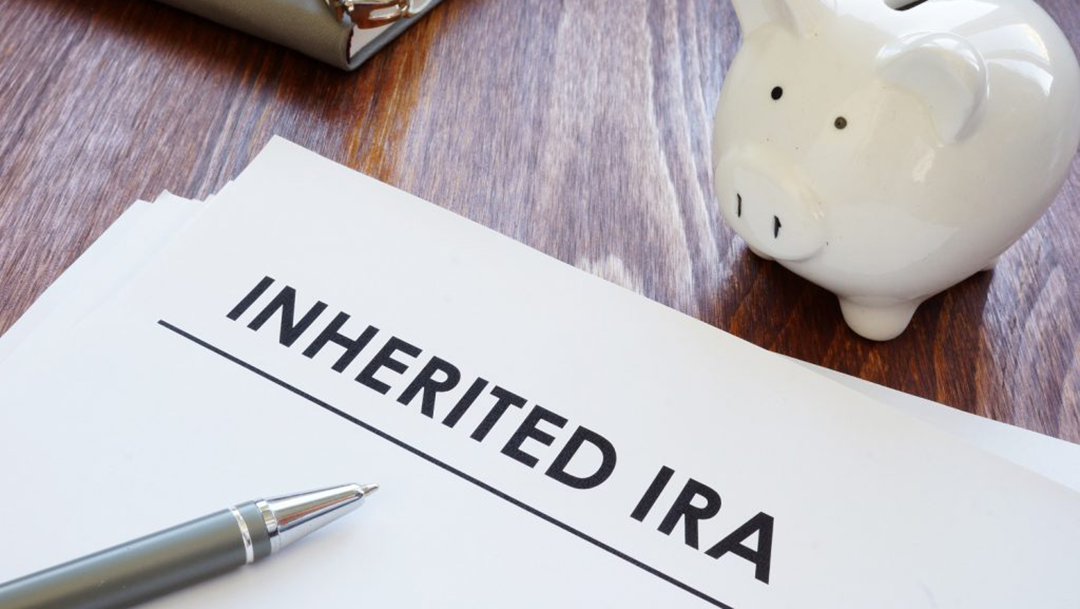
On Friday, December 20, 2019, the Setting Every Community Up for Retirement Enhancement (SECURE) Act was signed into law. The broad intent of the legislation is to make it easier for families to save more for retirement, but it also includes several unfavorable provisions intended to offset the loss of tax revenue likely to result from its more favorable provisions. One such provision is the “10 Year Rule”.
The 10-Year Rule and the Elimination of the Stretch IRA for Most Non-Spouse Beneficiaries
The “Stretch IRA” is a strategy that enabled an IRA beneficiary to keep an inherited account intact throughout their lifetime. By permitting a beneficiary to withdraw an inherited IRA over their own life expectancy, beneficiaries could maximize tax-deferred growth and reduce the tax impact of IRA withdrawals by spreading those withdrawals and the resulting taxable income over their lifetime.
The SECURE Act, however, effectively eliminates the “stretch” for most non-spouse beneficiaries and replaces it with the “10-Year Rule”. Under the 10-Year Rule, the entire inherited IRA must be withdrawn by the end of the 10th year following the year of inheritance.
Within those ten years, there are no distribution requirements. In other words, a person can withdraw the IRA evenly throughout the decade or wait until the very last year and withdraw the entire amount. As long as the entire balance is out by the end of the 10th year after the death of the original account owner, the beneficiary is free to withdraw the funds as they see fit.
Exceptions to the 10-Year Rule
Note that the 10 Year Rule does not apply to IRAs inherited prior to 2020. For those beneficiaries, the rules do not change.
The SECURE Act also identifies four groups of beneficiaries who are not subject to the new 10-Year Rule. This includes beneficiaries who are:
- Spouses
- Disabled
- Chronically ill
- Not more than 10 years younger than the original account owner
For these beneficiaries, they are eligible to stretch their inherited IRA just as they would have been able to do prior to the SECURE Act.
In addition, certain minor children of the account holder will be allowed to take age-based required minimum distributions until they reach age 18. At that time, they are then subject to the 10-Year Rule.
Implications of the 10-Year Rule
The elimination of the Stretch IRA for many beneficiaries increases the possibility that IRA withdrawals from an inherited IRA will be subject to higher marginal tax rates. Because the 10-Year Rule requires that an inherited IRA be liquidated over a shorter amount of time, it is more likely that the beneficiary will be pushed into a higher income tax bracket. In addition, it will reduce the ability of a beneficiary to defer the inherited IRA income into their own retirement years when they are likely to be in a lower tax bracket. This effect could be especially punitive for anyone who inherits an IRA during their peak earning years.
Example: Michael is age 50 and inherits an IRA worth $1,000,000. Michael is a high earner and is in the highest marginal tax rate of 37%. He plans on retiring at age 66 when he is scheduled to shift into a 28% marginal tax bracket (assuming a return to pre-TCJA statutory rates after 2025).
Prior to the SECURE Act, Michael could have taken minimum distributions from the inherited IRA according to his life expectancy. This would allow him to defer most of his withdrawals until after he retires. Assuming a 5% return and a life expectancy of age 90, the average tax paid throughout his life would have been approximately 30%.
Under the SECURE Act, he will be required to take 100% of the balance out by the time he is age 61. During that time, he will still be working, and any IRA withdrawals will be subject to the highest marginal tax rate. To avoid the scheduled increase in the highest marginal tax rate to 39.6% in 2026 (pre-TCJA rates), he chooses to withdraw the entire amount in 2025, paying a tax rate of 37% on the entire balance. The SECURE Act has effectively resulted in an increase in tax from 30% to 37%.
Strategies for Dealing with the 10-Year Rule
The withdrawal flexibility within the 10-Year Period is useful and provides some tax planningopportunities. For example, if a beneficiary knows they will be in a lower tax bracket in the near future, they may elect to defer withdrawals until that time, provided it is within the ten-year period.
Example: Mary is age 60 and inherits an IRA worth $500,000. She is a high earner and is in the highest marginal tax rate of 37%. She plans on retiring at age 66 when she is scheduled to transition into the 28% tax bracket.
According to the SECURE Act, she is required to withdraw the entire balance by the 10th year following the date of death. Because she will be in a lower tax bracket in 6 years, she decides to defer all withdrawals in years 1-5 and withdraws the remaining balance in years 6-10. Because she has just five years to liquidate the account, some of the withdrawals will increase her income beyond the 28% marginal rate and into the 33% tax bracket. Because this is still lower than her current rate of 37%, the strategy is still worthwhile.
Perhaps the most powerful strategy for dealing with the 10-Year Rule is the use of the partial Roth conversion, a strategy that must be employed while the original account holder is still living.
Example: Bob, age 80, and owns an IRA with a value of $1,000,000. His adult child James, age 50, is the sole beneficiary of the IRA. Bob is retired and is in the 24% marginal tax rate. James, on the other hand, is in his peak earning years and is in the 37% marginal tax bracket.
If Bob were to die within the next few years, the SECURE ACT would require James to withdraw the entire IRA while he was still working, subjecting the IRA to a 37% tax (or more if after 2026).
To mitigate this risk, each year Bob converts as much of his IRA as possible to a Roth IRA while staying within the 24% tax bracket. The Roth assets inherited by James will still be subject to the 10 Year Rule, but the withdrawals will be tax-free. By converting pre-tax IRA funds to a tax-free Roth asset, the tax rate is effectively reduced from 37% to 24%.
Note that this strategy needs to be implemented carefully, as it has implications for Social Security taxation and Medicare premiums. In addition, future tax rates are uncertain, so a positive outcome is not guaranteed. But if done carefully, it can at least reduce the risk of a bad outcome.
If you have any questions about the 10 Year Rule or strategies for dealing with the rule, please feel free to contact our office to speak with an advisor.
Schanel & Associates is a CPA firm specializing in accounting, tax, business valuation and litigation support serving Palm Beach, Martin and St. Lucie Counties and beyond since 1993. Our CPAs and accounting professionals work with individuals, businesses, estates and trusts to provide everything you need under one roof. For more information, contact us today at 561-624-2118.
Todd Schanel has been a principal at Schanel & Associates since 2004, where he specializes in financial planning, tax planning and consulting services. He also serves as Founding Principal and Director of Investment Advisory Services at Core Wealth Management, our sister company, where he leads an accomplished professional team offering independent and objective financial advice to help clients achieve their financial goals. Todd has been a CFA Charterholder since 2005, and in 2007 he earned his Certified Financial Planner® designation and became a licensed CPA. In 2015, he earned the Certified Valuation Analyst (CVA) designation.



